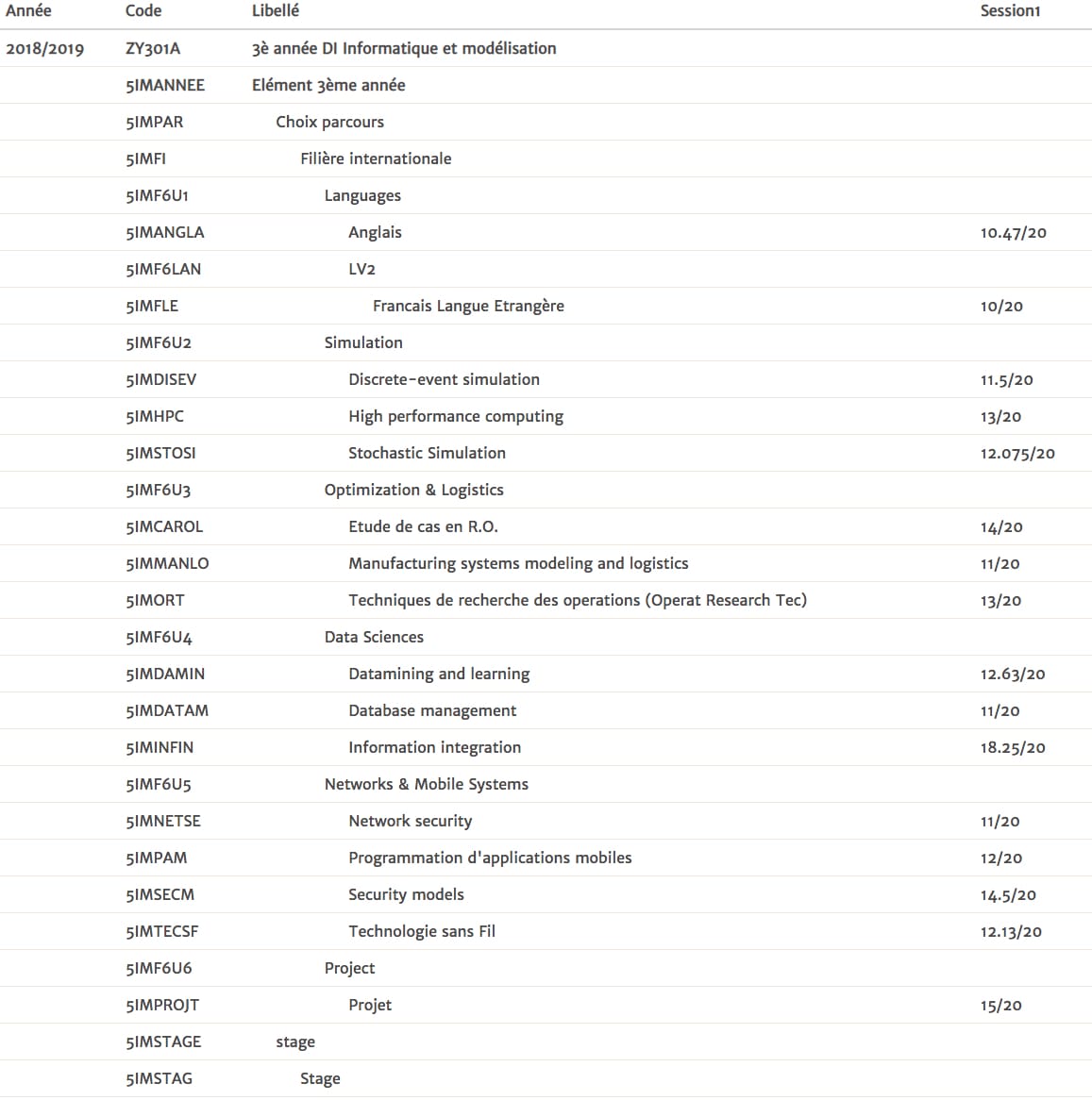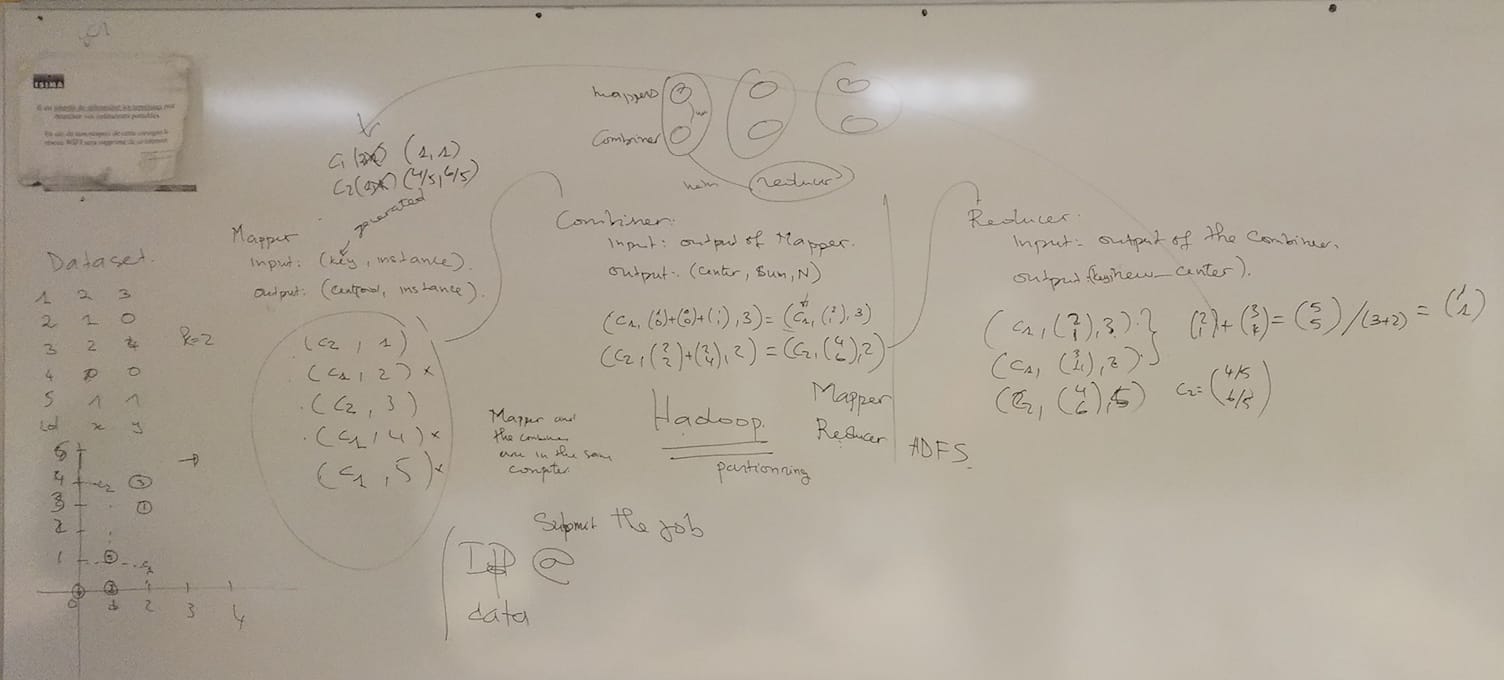PROJECT-M-UCA
A Tree Search algorithm for a Combinatorial Game
- We want to deal with a combinatorial 2-person positional game, and try to solve it through an Alpha/Beta Artificial Intelligence tree search procedure.
- Realizing a short bibliographical review on 2-person strategic games.
- Designing learning devices to be inserted into the tree search process
- Designing the filtered tree search process
- Implementing this procedure, and test its performance.
- SourceCode
Semi-supervised evidential clustering with data labeling and pairwise constraints
Evidential clustering algorithms, such as ECM, rely on the theoretical foundation of belief functions and evidence theory and allow to express many types of uncertainty about the assignment of an object to a cluster. It enables to handle crisp single cluster assignment, as well as cluster membership degrees, total ignorance and outliers detection. The credal partition, which is formed with the assignments of all the objects, generalizes other soft partitions such as fuzzy, possibilistic or rough partitions.
Clustering is an unsupervised task that often requires additional assumTPions to determine relevant solutions. The performances of a clustering algorithm can be highly improved by using background knowledge. To this end, several evidential semi-supervised clustering approaches have already been proposed by integrating prior information in the form of labeled data instances or in the form of pairwise constraints. However the two forms of knowledge have never been mixed in a single algorithm, which can be interesting in a real application.
The objectives of the internship are the following:
Review the various evidential semi-supervised clustering algorithms existing
Create new evidential clustering algorithm, based on ECM, that handles pairwise constraints and labels
Test the new algorithm on various toys datasets
COURSE-DESIGN&PRACTICE-M-UCA
Apply parallel-K-Means on the car picture database
- Describe the Problem
- With the development of information technology, volume of data processed by many applications will routinely cross the petascale threshold, which would, in turn, increase the computational requirements. Efficient parallel clustering algorithms and implementation techniques are the keys to meet the scalability and performance requirements entailed in such scientific data analyses.
- Our Contributions
- Review the conceptions of K-means and MapReduce
- Give our codes according to the pseudo-code provided by the PK-Means algorithm
- Execute the codes over 1 master and 4 slaves distributing environment with a cars dataset of 16,185 images.
- Verify the results got from experiments meanwhile draw the conclusions
- Design
- SourceCode
Programmation d’applications mobiles - AndroidPractical
You will make a revolutionary movie theater app, which allows to :
● Display a list of movies from Ciné Dome, with picture and showtime
● Display a detail of a movie on click
● Display the picture or video in fullscreen.
Calcul haute Performance
- TP1
- Prepare a 3 pages short “research” paper that will be a small survey on an HPC domain/conceTP/technique of your choice.
- At your disposal: examples of surveys to understand what they are.
- Guides on how to write papers (including correct reference citations with names [Name YYYY] using a Chicago like style guide (numbered references are also in use depending on Journals or Conferences.
- Follow strictly a research paper style. Example format are given : either an IEEE or WSC paper style (but always use Chicago style for references and not numbered references).
- Prepare a 3 pages short “research” paper that will be a small survey on an HPC domain/conceTP/technique of your choice.
- TP2
- Subject: Random number statuses & Parallel Stochastic streams
- Assignments
- Basics: Generation of pseudorandom numbers with a high quality generator
- Use of a scientific library in C++ for stochastic simulation (CLHEP)
- Parallel Monte Carlo simulation and Quasi Monte Carlo (Home Work for fast students and those interested)
- TP3
- Subject: Beware of floating point arithmetics
Stochastic Simulation
TP1
- Subject: Study of pseudo-random number generation
TP2
- Subject: Generation of Random Variates
-
- Subject: Monte Carlo Simulation & Confidence Intervals
-
- Subject: In this lab you will propose a discrete event simulation of the growth of a rabbit population in the absence of predators.
-
Subject: Cellular Automata and Memoization Multi-Agent Simulation
- Make your own choice for 2 competing categories of agents (predator preys – or agents competing for a resource), define your rules and neighbourhood for each category (agent moving and neighbourhood vision etc.)
- Agents will evolve in a cellular 2 D space with a torus like folding (start with a 10 x 10 space for debugging).
- Agent behaviour are stochastic (use a fine pseudo-random generator).
- The software should propose a textual output to give the main focus to the artificial intelligence
(rather than spending too much time on GUI development) – A GUI can be achieved in a second
time only if time permits. Follow a professional coding style and propose an online documentation (using for instance the « Doxygen » tool or an equivalent documentation tool – Javadoc for Java etc.).
Use (or discover) the Software Engineering tools you need (such as: a software profiler, debugger, version control systems, UML computer aided software engineering tools,…).
You can use (discover) GitHub/Lab an easy way & site to collaborate with others (Fork, send / pull requests and manage all your Git repositories (public and private).
A written report will be produced at the end of this last (and big) practical work. It will explain your design, some results and it will also present how you employed some soft. eng. tools.
DataMining
- TP1
- During this lab, you will discover Weka and Python for data processing.
The goal is to process the same dataset via both tools, to compare their effectiveness
in terms of results and understanding. For the continuation of the TPs, you
will have to choose one which you prefer.
- During this lab, you will discover Weka and Python for data processing.
- TP2
- Lors de ce TP, vous aller découvrir les algorithmes du clustering. Par ailleurs
vous devrez réemployer les méthodes de prétraitement abordées dans les Tps
précédents.
- Lors de ce TP, vous aller découvrir les algorithmes du clustering. Par ailleurs
Semantic Web
- TP1
- Write SPARQL queries
- TP2
- Write SPARQL queries
- TP3
- Querying multiple RDF graphs
- Query a remote dataset
- Query a remote endpoint
- Federated queries
- Data quality
Supply Chain
- TP1
- End of june during the demand review the marketing and sales describes a situation of a growing market compared to the previous forecasts. Beginning SeTPember and during 4 months, skis sales could be increased of 20% and 10% for surfs sales. You are the supply chain manager in charge to define and present a new plan to your boss.
- Before the pre S&OP the financial manager complains about your proposal. The growing situation is not enough reflected in your result. He asks you to find a new solution improving the financial results. What are you going to propose?
- Big boss ask you to make me suggestions about investments.
Database Management
- TP1
- Analysis of an Existing Oracle instance (eg ORCL)
- Stopping and starting an instance (eg ORCL)
- Creating a new database
- Creating Data Dictionary Views and Creating Standard Packages
- TP2
- Controle files
- Redo Log files
- Data files and tablespaces
- TP3
- Managing Users
- Profile Management
- Privilege Management
- Role Management
- TP4
- Backup and Recovery
Cryptology
- TP1
- Threat analysis
- GDPR
- Generation of OpenPGP keys
- Brute-force attack
- Power Attack on RSA Signature
TP2
- Scytale
- Polybius Square
- RSA EncryTPion
- ElGamal EncryTPion
- RSA Signature
- Zheng & Seberry
- ElGamal with ElliTPic Curves
TP3
- Properties of Secure Hash Function
- Compression and hash Functions
- Block Cipher Modes
- Collisions in CBC Mode
- DES
- LFSR
- TP4
- Example of Diffie-Hellman Key
- Attack of the Needham-Schroeder Protocol
- The key ring of a PGP Certicate
- Signature Based on the Identify
- Secure Shell
- TP5
- Http vs Https authentications
- OpenPGP
- OpenSSL
- Tor
- Qualys
Security Model
- TP1
- Negligible Functions
- DL, CDH, DDH assumTPions
- Deterministic Asymmetric EncryTPion Scheme
- Indistinguishability Security
- One-way Security
- TP2
- Block Cipher Mode of Operation
- Zheng & Seberry cryTPosystem
- Symmetric EncryTPions Schemes
- Paillier CryTPosystem
- ElGamal CryTPosystem
LECTURES
- 15 lectures in whole from 2018.9.20 - 2019.3.15.




